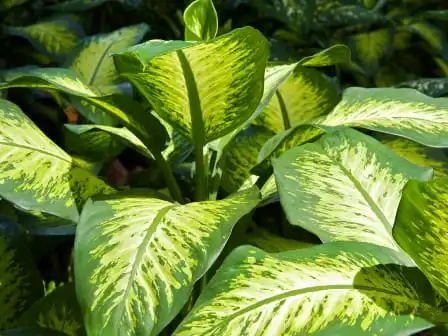Table of Content
For many of us, enhancing our homes with lush greenery brings joy and tranquility to our surroundings. Yet, not all plants are safe companions indoors. Some possess toxicity levels that pose significant risks to both humans and pets. In this article, we'll explore eight of the most perilous plants unfit for home environments, detailing potential dangers and symptoms of exposure. Whether you have a green thumb or simply appreciate botanical beauty, it's crucial to familiarize yourself with these hazardous species to ensure the safety of yourself and your loved ones. Read on to discover these plants and safeguard your household.
Plants you should never keep at home
Dumbcane (Dieffenbachia)

The sap of this plant contains poisonous substances that can lead to intense swelling and a burning sensation in the mouth and throat.
Castor Bean (Ricinus communis)

This plant harbors ricin, a lethal toxin that can result in organ failure if consumed.
Oleander (Nerium oleander)

Every part of this plant, from its flowers to its leaves, contains toxic compounds that can prove fatal if eaten.
Philodendron

The leaves of this plant contain calcium oxalate crystals, which can induce severe pain and swelling if chewed or ingested.
Chinese Evergreen (Aglaonema)

The sap of this plant can cause skin irritation, and its berries are toxic if ingested.
Pothos (Epipremnum aureum)

The leaves of this plant contain calcium oxalate crystals, which can cause mouth and throat irritation.
Sago Palm (Cycas revoluta)

Every component of this plant is extremely toxic, with the seeds being especially dangerous if consumed.
Devil’s Ivy (Epipremnum aureum)

This plant harbors calcium oxalate crystals, which can induce mouth pain and swelling if chewed or ingested.
By excluding these perilous plants from your home, you can establish a safer environment for yourself and your family. Remember, prevention surpasses cure, and it's wiser to err on the side of caution when dealing with toxic and harmful plants.
Also Read: 10 New False Ceiling Designs - to Make Your Home Stand out
Why avoid keeping dangerous plants at home?
Ensuring the safety of your household is paramount, necessitating the avoidance of hazardous plants within your home. Although the appeal of vibrant foliage may be enticing, it's crucial not to overlook the substantial health risks posed by these toxic and harmful plants.
- Allergies: Dangerous plants can trigger allergic reactions in sensitive individuals, leading to respiratory distress, skin rashes and uncomfortable symptoms.
- Skin irritations: Contact with specific plants can result in skin irritations, such as dermatitis, hives or itching. It’s crucial to avoid direct contact and take preventive measures.
- Poisoning: Perhaps the most severe threat is the risk of poisoning. Many plants contain toxic compounds that, if ingested, can lead to severe illness and even prove fatal.
When selecting indoor plants, it's crucial to prioritize the safety of children and pets who might inadvertently encounter these poisonous plants. Curiosity may result in unintended ingestion or exposure, leading to serious repercussions.
By understanding the potential hazards associated with these toxic plants, you can make informed choices and protect the welfare of your loved ones.
| Plant name | Danger level | Symptoms |
| Lily of the Valley | High | Nausea, vomiting, irregular heart rate |
| Dumb Cane | Moderate | Swelling, difficulty breathing, throat irritation |
| Oleander | High | Cardiac arrhythmia, dizziness, seizures |
| Dieffenbachia | Moderate | Oral irritation, swelling, difficulty speaking |
| Castor Bean Plant | High | Abdominal pain, severe dehydration, convulsions |
It's essential to educate yourself about these hazardous plants and implement necessary precautions. By completely avoiding them, you can establish a safe and secure environment for everyone in your household.
Also Read: 25+ Double Bed Design Photos for Your Bedroom: Stylish Options







_1767769068.webp)




Ans 1. While many dangerous plants are toxic, not all of them are. Some plants can cause harm through physical injury, such as thorns or sharp leaves. It is important to research and understand the specific risks associated with each plant before bringing them into the home.
Ans 2. Yes, certain plants can be toxic to pets if ingested. Common symptoms of plant poisoning in pets include vomiting, diarrhoea, drooling, difficulty breathing and even seizures. It is important to keep potentially hazardous plants out of reach of pets to ensure their safety.
Ans 3. There are several ways to identify if a plant is dangerous. Look for warning signs such as thorns or spines, unusual coloration or strong odours. Research the plant's name and characteristics online or consult a horticulturist or botanist for specific information on whether the plant is hazardous.
Ans 4. Yes, some dangerous plants can cause skin irritations, such as rashes or dermatitis, upon contact. It is important to wear gloves and protective clothing when handling these plants to minimise the risk of skin reactions. If skin irritation occurs, wash the affected area with soap and water and seek medical advice if symptoms persist.